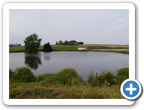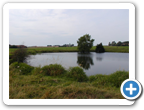The Western Front Today - Kruisstraat Craters
The Kruisstraat Craters, seven miles from Ypres, are situated on what was the German front line at the start of the Battle of Messines, on 7 June 1917.
The Kruisstraat Craters comprise three craters - only two now remain, one having been filled in - formed by the blowing of mines at the start of Third Ypres. Tunnelling for the laying of the mines was actually begun in December 1915. Five separate tunnelling companies separately worked upon the mines - the 250th, 182nd, 3rd Canadian, 175th and 171st.
At a depth of 1,650 feet a 30,000lb ammonal charge was first laid, accompanied by another 30,000lb charge 166 feet to the right, this time underneath the German front line.
The successful laying of these two mines completed the original plan, however a decision was taken to extend the mining position to the German third line. Two months later a gallery stretching half a mile from the shaft was completed and a further ammonal charge of 30,000lb laid. This latter tunnel was the longest of Third Ypres.
In February 1917 German countermining resulted in damage to one of the chambers (which itself remained undiscovered) which required repairing.
At the same time a further 19,500lb charge was laid, making a total of four mines completed in early May 1917. From these four explosions the two Kruisstraat Craters remain, assumed to be the first two charges lain. They are apparently favoured local fishing spots.
Film Footage of Kruisstraat Craters
Around one million Indian troops served in WW1, of which some 100,000 were either killed or wounded.
- Did you know?



